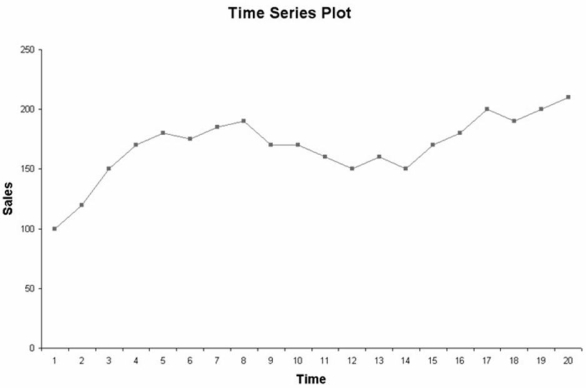Multiple Choice
Assume that a time-series plot takes the form of that shown in the following graph:  Given this plot,which of the following models would likely give the best fit?
Given this plot,which of the following models would likely give the best fit?
A) 
= b0b1 + b1t
B) 
= b0 + b1t + b1t2 + b1t3
C) 
= b0 + b1t + b1t2
D) 
Correct Answer:

Verified
Correct Answer:
Verified
Q35: The best subsets method will involve trying
Q58: In curvilinear regression modeling, a composite model
Q59: In a multiple regression model, R-square can
Q88: When an independent variable, that has a
Q102: In a multiple regression model,the regression coefficients
Q103: The following regression output is the result
Q105: A study has recently been conducted by
Q107: Based on the residual plot below,which of
Q108: The editors of a national automotive magazine
Q109: In a multiple regression model, it is